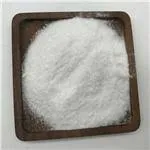Chemicals Used in Wastewater Treatment Plants
Wastewater treatment plants play a crucial role in protecting our environment and public health by treating sewage and industrial wastewater before it is released back into natural water bodies. A variety of chemicals are utilized throughout the different stages of the treatment process to enhance efficiency, control odor, remove contaminants, and ensure compliance with regulatory standards. In this article, we will explore the primary chemicals used in wastewater treatment plants and their functions.
1. Coagulants and Flocculants
Coagulation and flocculation are essential processes in the preliminary treatment stage of wastewater management. Coagulants, such as aluminum sulfate (alum), ferric chloride, and polyaluminum chloride, are added to the wastewater to neutralize charges on suspended particles. This causes the particles to clump together, forming larger aggregates known as flocs. The flocculants, which can be synthetic polymers, help to further aggregate these clumps, allowing for easier sedimentation during subsequent sedimentation processes. This results in a significant reduction of suspended solids.
2. Disinfectants
Disinfection is a critical stage in wastewater treatment that aims to eliminate harmful pathogens. Various chemicals are used for this purpose, with chlorine being one of the most common disinfectants. However, the use of chlorine can lead to the formation of harmful disinfection byproducts, which has led to increased use of alternative disinfectants. Sodium hypochlorite, ozone, and ultraviolet (UV) light are also frequently employed. Ozone is particularly effective as it does not leave harmful residues, while UV disinfection is a chemical-free method that effectively inactivates microorganisms without introducing any substances into the treated water.
3. pH Adjusters
The management of pH levels is crucial in wastewater treatment, as it affects both chemical reactions and microbial activity. Commonly used pH adjusters are acids and bases such as sulfuric acid, hydrochloric acid, sodium hydroxide, and lime. For instance, lime is often used to raise the pH in anaerobic digestion processes, promoting the growth of beneficial bacteria that break down organic matter.
what chemicals are used in wastewater treatment plants

Nutrient control is an essential aspect of wastewater treatment, especially in combating nutrient pollution that leads to eutrophication in water bodies. Chemicals like ammonium sulfate, ferric chloride, and aluminum sulfate are used to control phosphorus levels. In some systems, nitrogen is added in the form of ammonium salts to facilitate the growth of bacteria that convert ammonium to nitrate, which is further processed during nitrification.
5. Odor Control Agents
Odor from wastewater can be a significant nuisance for communities near treatment plants. To mitigate this, various odor control chemicals are employed. For example, hydrogen peroxide and sodium bisulfite are effective in reducing hydrogen sulfide—a common cause of foul odors. Additionally, various chemical scrubbers and biofilters can be utilized to treat odorous gases before they are released into the atmosphere.
6. Sludge Conditioning Agents
Treating the residual sludge generated during wastewater treatment requires the use of conditioning agents. Polymers and lime are commonly added to enhance the dewatering process, making it easier to remove water from the sludge and reducing the volume of waste that needs further treatment or disposal.
Conclusion
The diverse range of chemicals used in wastewater treatment plants plays a pivotal role in ensuring that our water resources remain clean and safe. From coagulants and disinfectants to odor control agents and sludge conditioning materials, understanding their functions is crucial for optimizing treatment processes and ensuring environmental compliance. As technology advances, new chemicals and innovative methods continue to emerge, contributing to the effective management of wastewater while safeguarding public health and protecting ecosystems.

